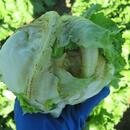All
"The sweat" is the common term used to describe the natural process of allowing potatoes to shed excess moisture after being harvested. This process takes up to three weeks to complete once potatoes are in dry storage. After the sweat is finished, potato skins will have a smooth, net-like appearance that reflects the typical Russet variety.

Tomato spotted wilt virus, or TSWV is spread through nine different varieties of tiny winged insects called thrips. The disease affects tomatoes, but also celery, eggplants, peppers, lettuces, and pineapples, among others. Symptoms include bronze leaves, dark spotting, drooping leaves, stunted growth, and reduced yields. If a plant is affected early in the season, it will not produce fruit.
What is it?
A parasitic protozoa that causes the disease toxoplasmosis, this bacterium can infect all warm-blooded animals, but cats are the primary hosts. Some estimates say that up to 30% of the world’s human population has been infected.
How is it spread?
The most common modes of transmissions include consuming raw or undercooked meat containing T. Gondii, ingesting water, soil, or foods contaminated with the feces of infected animals or humans, and in rarer cases through blood transfusions, organ transplants, and transplacental transmission from mother to unborn child.
Typical Symptoms
Infected persons are often asymptomatic as the immune system prevents the disease from causing illness, but some people experience sore lymph nodes and muscle aches. Pregnant women can transmit it to their babies, causing miscarriage, eye and brain damage, vision problems, and seizures. Those with weakened immune symptoms may report confusion, fever, headaches, nausea, poor coordination, and seizures.
Most at risk
Pregnant women and immunocompromised peoples are most at risk.
For more information, see:
What is Trace Back?
Trace back refers to any means of tracing raw materials or ingredients in a product back to their places of origin. In the produce industry, for example, if a box of shredded lettuce were produced and packed under a trace back program, your distributor could trace back the head lettuce to a specific grower-shipper, packing house—even the field of origin. In the event the shredded lettuce was suspected in a case of foodborne illness, all other products sourced from the same origin could thus be readily identified and withdrawn from the market.
